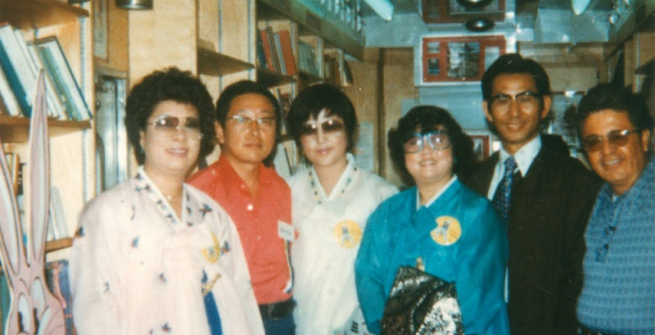Continuing our celebration of Asian Pacific American Heritage Month, we highlight the importance of paying tribute and recognizing the history and the contributions Asian Americans and Pacific Islanders enriched to the United States. As a native Angeleno in the Koreatown district, I naturally gravitated toward uncovering the long history of establishing Koreatown's vibrant cultural metropolis. It is my hometown, and I wanted to honor this part of Los Angeles by sharing its history on the emergence of this beloved district.
It began in 1902 with the immigration of prominent activist Dosan Chang Ho Ahn (1878-1938) with his wife Hye Ryeon Lee (Helen Ahn) (1884-1969) to the United States. Ahn Chang Ho was one of the active members of the Korean Independence Movement to restore Korea's diplomatic sovereignty after the signing of the Japan-Korea Treaty, also known as the Eulsa Unwilling Treaty, under the constraints of Japanese troops at the Korean Imperial Palace. Ahn and four other members were the pillars of the first Korean Independence Movement in San Francisco.
Faced with anti-Asian discrimination, in 1904, Ahn left for Riverside, known for its booming citrus industry in needing to make a living. Ahn settled in Riverside and gathered and assisted in finding employment for other Koreans. In 1905, he formed the Pachappa Camp in Riverside, a distinctly Korean family-based settlement. Men, women, and children resided here together. Most of us considered the Koreatown district in Los Angeles as the first establishment, but about five years ago, it was discovered by the University of California, Riverside Professor Edward T. Chang that the first Koreatown was founded in Riverside. Chang stumbled upon a 1908 map issued by an insurance company labeled 'Korean settlement in Riverside, which unburied an integral part of Korean-American history. Chang's further research led him to the significant discovery that Pachappa Camp was the birthright where the 21 articles of governance for a future independent Korea were drafted. Pachappa Camp was short-lived, lasting only 15 years but was considered the largest and pivotal central point in leading the independence movement.
In 1913, a deep freeze hit the citrus industry, forcing the Koreans to leave Pachappa Camp and disperse to other California farming towns. Ahn and his family then moved to Los Angeles and settled on Bunker Hill in the center of Downtown. During Ahn's time in Los Angeles, he founded The Korean Presbyterian Church and the Korean National Association located on Jefferson Blvd. This became a centralized settlement for the Korean community and gradually developed into a Koreatown district.
The Hart-Celler Act of 1965 permitted a massive influx of immigrants to enter the country. This Immigration Act was the passage in the growth of the Korean community. It allowed thousands of people from Korea to immigrate to the U.S. to join their loved ones. Immigrants from other ethnicities also settled in the Koreatown area, transforming it into a diversifying landscape.
Among the surge of Korean immigrants was Hi Duk Lee (1939-2019), a businessman who worked in Germany and the United States. Lee immigrated to Los Angeles in 1968 and wanted to improve the lacking state of the Korean-centric businesses. He wanted to create a space for the Korean community to call their own. Lee opened the Olympic Market and stocked it with Korean brand items.
The Olympic Market flourished and became a staple destination for the ten thousand Koreans living in Los Angeles. This set in motion Lee's greater vision in his drive to establish a town dedicated to the Korean community. He bought five blocks around Normandie Avenue and Olympic Boulevard and established a V.I.P. Plaza shopping center. This center was dedicated to Korean-owned businesses. Lee's passion for creating a Korean-centric district worked closely with city officials such as then-Mayor Tom Bradley, property owners, and sponsored communities to manifest this development. Thanks to Lee's efforts, in 1980, Koreatown was recognized and declared an official neighborhood in Los Angeles County. In 1982, Koreatown signs were installed near the 10 freeway and Normandie Avenue.
We can't deny the hardships that hit home here in Koreatown over the years. But what makes Koreatown special is its resiliency. The collective forces of the Korean residents and South Korean investors came together to rebuild their livelihoods. The sense of community restored the heartbeat of this district. Today, Koreatown is the epicenter of the entertainment industry. This vibrant neighborhood is visited from all across the U.S. The significance of Koreatown is the integration of multiethnic communities living alongside together. Still, most importantly, it symbolizes a marker of a sense of belonging for Korean immigrants and US-born Koreans in American society.
Los Angeles Public Library has extensive photographs from Shades of L.A. of the Tessa collections and book resources to learn more about the Korean American experience.
